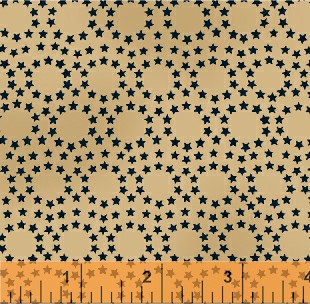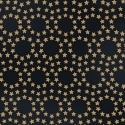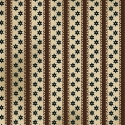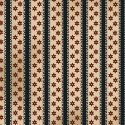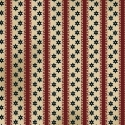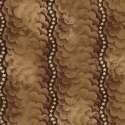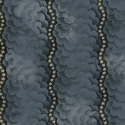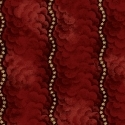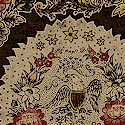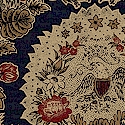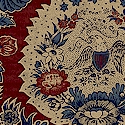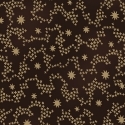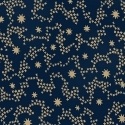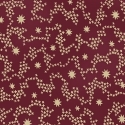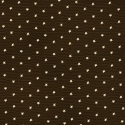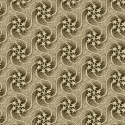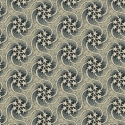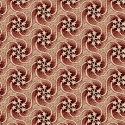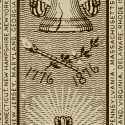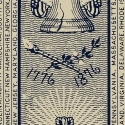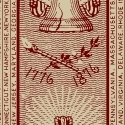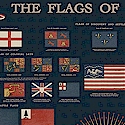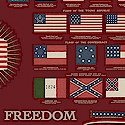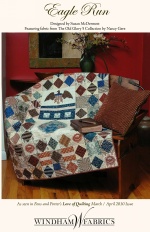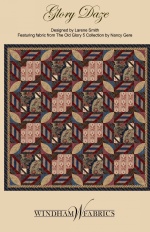Old Glory V
Designed by Nancy Gere.
Stars and stripes have been a popular theme ever since fabric started being printed. The expanded use of the eagle motif became popular as the eagle itself grew as a symbol of the new colonies in America in the mid 1700's. Many of these eagle motif designs came from Europe as commemorative fabrics.
Windham's Old Glory series captures the embodiment of stars and stripes as a theme by sharing with you some of our all time favorites. Old Glory V offers a particularly eclectic mix of bombs bursting in air, liberty bells, eagles, and an interesting picotage design ca. 1840. The flags of freedom design offers an interesting glimpse into the varied history of the flags that helped shape this nation. A brief chronology about the real "Old Glory" goes something like this:
- Congressional Act of January 13, 1794 - provided for 15 stripes and 15 stars after May 1795.
- Congressional Act of April 4, 1818 - provided for 13 stripes and one star for each state, to be added to the flag on the 4th of July following the admission of each new state, signed by President Monroe.
- Executive Order of President Taft dated June 24, 1912 - established proportions of the flag and provided for arrangement of the stars in six horizontal rows of eight each, a single point of each star to be upward. Prior to this order the stars could be arranged in any order the flag maker desired.
- Executive Order of President Eisenhower dated January 3, 1959 - provided for the arrangement of the stars in seven rows of seven stars each, staggered horizontally and vertically.
- Executive Order of President Eisenhower dated August 21, 1959 - provided for the arrangement of the stars in nine rows of stars staggered horizontally and eleven rows of stars staggered vertically.
Cotton
Free Projects
